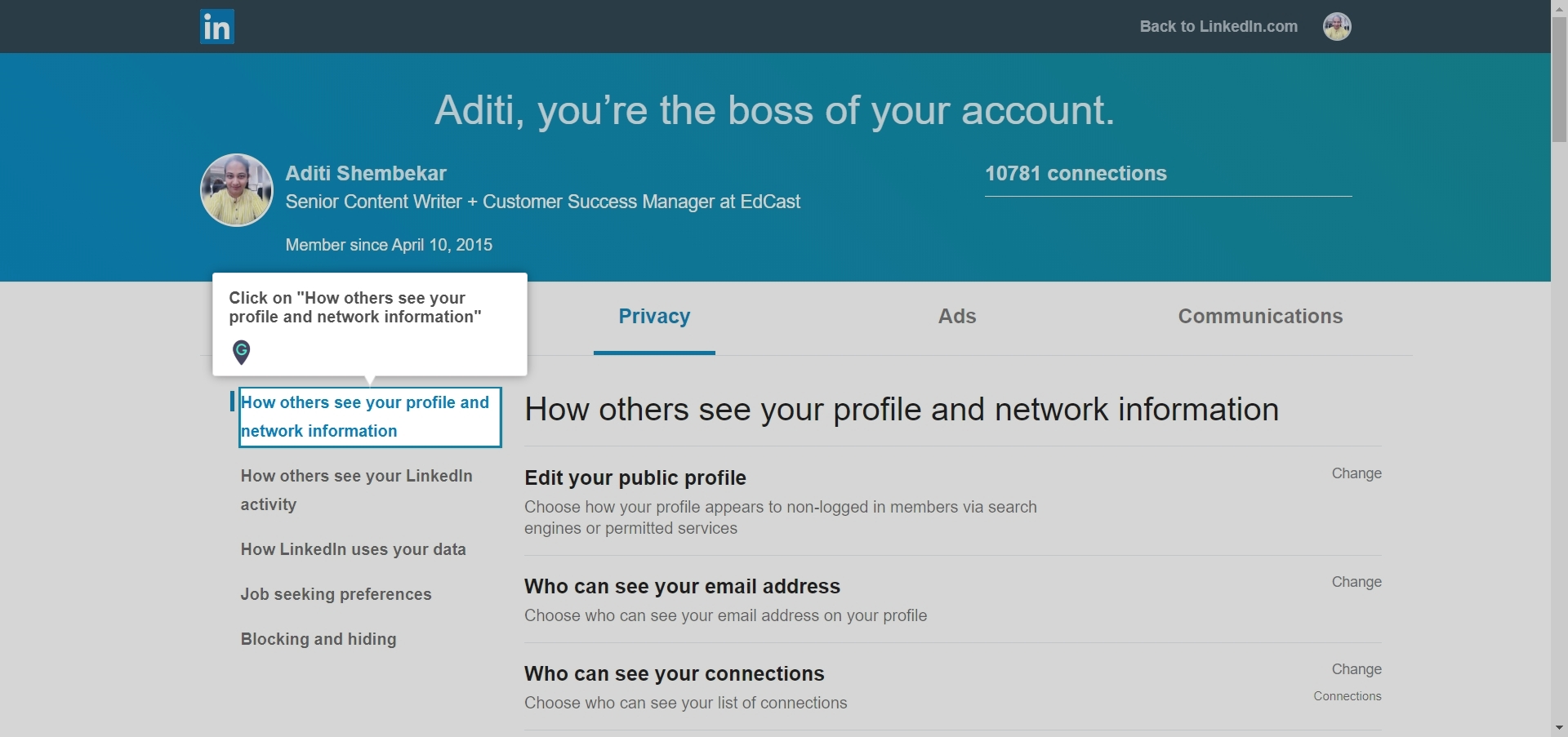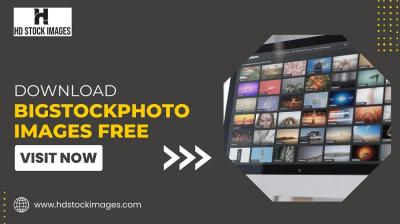LinkedIn is more than just a digital resume; it’s a powerful networking tool that can open doors to new opportunities. Whether you're searching for a job, looking to connect with industry leaders, or simply wanting to stay in touch with colleagues, understanding how to view your LinkedIn connections is essential. In this post, we'll explore not only how to find your connections but also why managing your network effectively can have a lasting impact on your professional journey.
Understanding the Importance of Your LinkedIn Network

Your LinkedIn network is like a digital garden; the more you nurture it, the more it grows and flourishes. But why is it so crucial to pay attention to your connections? Let’s break it down!
1. Expanding Opportunities
Every connection you make on LinkedIn represents a potential opportunity. This could be:
- Job offers: Recruiters often browse through connections to find candidates.
- Partnerships: Collaborating with others can lead to innovative projects.
- Mentorship: Connecting with experienced professionals can provide invaluable guidance.
2. Keeping Up with Industry Trends
Your network can serve as a pulse on what’s happening in your industry. By staying connected, you can:
- Access the latest news shared by your connections
- Gain insights through discussions and comments
- Participate in industry-related groups for deeper engagement
3. Building a Personal Brand
Each connection adds to your professional reputation. When you share content or engage with your network, you position yourself as a thought leader. Here’s how to do it:
- Share valuable content: Consider posting articles or insights relevant to your field.
- Engage regularly: Comment on and react to posts to stay visible.
- Endorse skills: Recognizing others can lead to reciprocation and strengthen relationships.
4. Networking Beyond Borders
LinkedIn allows you to connect globally, breaking geographical barriers. This means:
- You can form relationships with professionals from diverse backgrounds.
- You gain access to international job markets and opportunities.
- You can learn different perspectives, enriching your professional outlook.
In conclusion, your LinkedIn connections aren't just numbers; they’re valuable relationships that can significantly affect your career trajectory. By actively managing and nurturing these connections, you can unlock a world of possibilities and keep yourself relevant in an ever-evolving job market. So, are you ready to dive in and make the most of your LinkedIn network? Let’s get started!
Also Read This: Can I Temporarily Deactivate My LinkedIn: How to Temporarily Deactivate Your LinkedIn Account
3. How to Access Your LinkedIn Connections
Accessing your LinkedIn connections is a straightforward process, and it’s essential for managing your professional network effectively. Once you log into your LinkedIn account, follow these simple steps:
- Go to Your Profile: Click on your profile picture or the “Me” icon at the top of the homepage. This action will take you to your profile page, where you can see your recent activity, posts, and of course, your connections.
- Find the Connections Section: Scroll down your profile until you reach the “Connections” section. Here, you’ll see a summary of your connections along with a button that says “See all connections.” Clicking on this will open a comprehensive list of everyone you’re connected with.
- Use the Search and Filters: LinkedIn allows you to search for specific connections by name or filter them by location, company, or industry. This can be particularly helpful if you have a large network. Simply type in the name or use the filter options on the right side of the connections page.
Once you're viewing your connections, you’ll notice that LinkedIn provides a variety of options. You can send a message directly, view their profiles, or even endorse their skills. This accessibility is what makes LinkedIn such a powerful tool for networking!
Also Read This: How to Find Recruiters on LinkedIn Effectively
4. Organizing Your Connections for Better Management
Once you have accessed your connections, the next step is to organize them effectively. A well-organized network makes it easier to maintain relationships and leverage your connections for career opportunities or collaborations. Here are some practical tips to get you started:
- Create Connection Tags: LinkedIn allows you to tag your connections based on how you know them or their relevance to your career goals. For example, you could create tags like “Colleagues,” “Industry Contacts,” or “Mentors.” This feature helps you quickly filter and find connections relevant to specific purposes.
- Utilize Notes: Although LinkedIn doesn’t have a built-in note-taking feature for connections, you can maintain a separate document or application for keeping notes about your interactions with each contact. This could include reminders about when you last connected or specific topics discussed. It personalizes your approach with each connection.
Organizing your connections isn’t just about tags and notes; it’s also about engaging with them. Regularly check in, share relevant articles, or congratulate them on their achievements. A simple message can keep the relationship alive and may open doors in the future.
In summary, accessing and organizing your LinkedIn connections is crucial for effective network management. By following these tips, you’ll not only maintain your connections but also strengthen them, making your LinkedIn experience all the more valuable!
Also Read This: How to Write Engaging LinkedIn Posts: Tips for Creating Impactful Content
5. Strategies for Engaging with Your LinkedIn Connections
Engaging with your LinkedIn connections isn’t just about sending a quick message now and then. It’s about building meaningful relationships that can help you in your career. Here are some effective strategies to make your interactions more impactful:
- Personalized Messages: Whenever you reach out, whether through a connection request or a message, personalize it. Mention something specific about their profile, like a recent post they made or an accomplishment. For example, instead of saying, “Hi, let’s connect,” try, “Hi [Name], I really enjoyed your article on digital marketing trends. I’d love to connect and discuss it further!”
- Regular Updates: Share updates about your professional journey and insights related to your industry. This could be articles, thoughts on recent trends, or even sharing your own achievements. Regularly engaging in this way keeps you on their radar and encourages reciprocal engagement.
- Comment on Their Posts: Take the time to comment on your connections' posts. A thoughtful comment can spark a conversation and deepen your relationship. Instead of just liking a post, ask a question or share your own perspective to show you value their insights.
- Utilize LinkedIn Groups: Join groups related to your professional interests and participate actively. This not only allows you to engage with your connections but also helps you meet new people within your field.
- Schedule Catch-Ups: If you have close connections, consider scheduling a virtual coffee chat. These one-on-one conversations can strengthen ties and open doors for collaboration. Just a simple “Let’s catch up over Zoom next week?” can go a long way.
By implementing these strategies, you’ll not only maintain your connections but also foster a vibrant professional network that can open many doors.
Also Read This: A Beginner’s Guide to Web Scraping Data from LinkedIn
6. Tips for Expanding Your Network on LinkedIn
Looking to broaden your horizons on LinkedIn? Expanding your network is essential for career growth and opportunities. Here are some practical tips:
- Optimize Your Profile: Before you start connecting, make sure your profile is polished. A professional photo, a compelling headline, and a well-crafted summary can make all the difference. This way, when you send requests, people will be more inclined to accept.
- Connect with Alumni: Use the alumni tool on LinkedIn to find and connect with former classmates. Shared experiences can create instant rapport. You might say, “Hi [Name], I noticed we both attended [University]. I’d love to connect and learn about your journey since graduation!”
- Follow Industry Leaders: Start following and engaging with thought leaders in your industry. Comment on their posts and share their content with your own insights. This will not only increase your visibility but might also lead to new connections.
- Attend LinkedIn Events: Participate in webinars and virtual events hosted on LinkedIn. Not only do they provide valuable insights, but they also allow you to interact with other attendees, thus expanding your network.
- Utilize the “People You May Know” Feature: LinkedIn suggests people based on your connections and interests. Regularly check this feature and send connection requests to relevant professionals. A personalized note explaining why you’d like to connect can also improve your acceptance rate.
By following these tips, you can effectively expand your LinkedIn network, paving the way for new opportunities and professional growth.
Also Read This: What Is My LinkedIn Address and How to Share It with Potential Employers
7. Common Challenges in Managing LinkedIn Connections and How to Overcome Them
Managing your LinkedIn connections can sometimes feel overwhelming, especially as your network grows. Here are some common challenges you might face, along with practical solutions to overcome them:
- Challenge 1: Too Many Connections
As your network expands, keeping track of your connections can become difficult. You might forget who some of your connections are or what they do. - Solution: Regularly audit your connections. Take time every few months to go through your list and remove connections that no longer align with your professional goals. This can help streamline your network and make it more relevant.
- Challenge 2: Inactive Connections
You might find that many of your connections are inactive or rarely engage with your posts. - Solution: Focus on engaging with those who actively participate. Consider reaching out to inactive connections to see if they might want to reconnect or collaborate on a project. If they remain unresponsive, it might be time to part ways.
- Challenge 3: Misaligned Goals
Sometimes, connections don’t align with your current career objectives or interests. - Solution: Be intentional about who you connect with in the future. When sending or accepting connection requests, think about how that individual can contribute to your professional journey.
- Challenge 4: Overwhelming Notifications
With numerous connections, your feed can become cluttered with notifications and updates. - Solution: Customize your notification settings. You can choose which updates you want to see and from whom. This will help keep your feed relevant and less chaotic.
- Challenge 5: Fostering Real Connections
It’s easy to fall into the trap of simply collecting connections without developing meaningful relationships. - Solution: Make an effort to engage with your connections. Send personalized messages, comment on their posts, or even schedule virtual coffee chats. Building genuine relationships can lead to greater opportunities.
By recognizing these challenges and implementing these strategies, you can manage your LinkedIn connections more effectively and create a more valuable network.
8. Conclusion
Managing your LinkedIn connections is not just about numbers; it's about cultivating a network that supports your career aspirations and professional growth. As you navigate your connections, remember that quality often trumps quantity. Take the time to connect with individuals who align with your goals and interests.
Utilizing the features LinkedIn offers—like filtering connections, following industry leaders, and regularly engaging with your network—can make a significant difference in how you perceive and manage your professional relationships. Don’t hesitate to reach out to those who've inspired you or to reconnect with old colleagues. Remember, every connection is an opportunity waiting to be explored!
As you continue on your journey, keep these strategies in mind and don’t shy away from adjusting your approach as your career evolves. Your LinkedIn network can be a powerful tool in achieving your professional dreams, so invest time and effort into nurturing it. Happy networking!
 admin
admin








